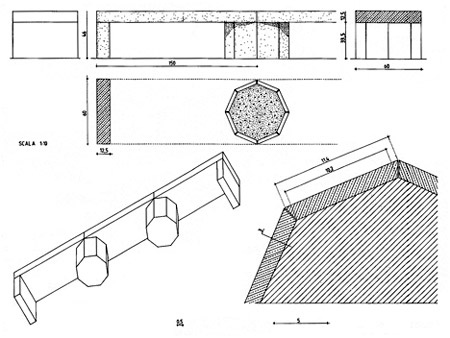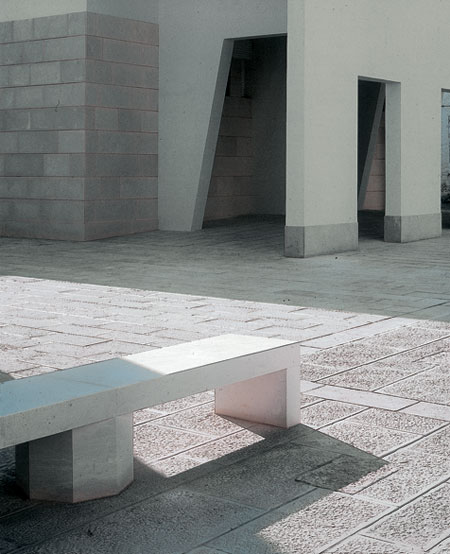16 Febbraio 2010
English
Piazza Caracciolo at Sammichele (1999-2001)
Netti Architetti

In a small town near Bari, Lorenzo Netti and Gloria Valente have redesigned the appearance of three adjacent squares strongly characterised by the emergence of ancient monuments. The objective of the design is the re-qualification of minor historical sites and the re-establishment of the spatial quality in empty urban spaces.
New “basole” (large stone paving slabs of volcanic origin) of Trani stone, laid next to each other, form the paved areas in the three squares. Thus the stone becomes a unifying presence which, as a result of the directional nature of the laid stone, orientates the paving, thus capable of containing and interconnecting the objects situated within each of the three squares.
At the focal point of this system of public spaces, in Piazza Caracciolo at the entrance to the Castle of the same name, the design achieves its greatest figurative strength. Thanks to the partial demolition of a covered concrete market built in the 1950s, the square has been restored to its original size. The part of the building left standing has been reconverted as a civic hall for cultural events organised by the castle museum. The renovated building, which has been given a new stone cladding, boasts a portico designed to recoup the missing volume of the original block.


The square has been repaved with strong, thick slabs of Trani stone dressed using a bush-hammer. The stone elements have been laid on a bed of sand and jointed with cement mortar. Ancient basole, recouped from the previous paving, have been inserted here and there to decorate the bare, regular design of the new paving.
The directional variations of the new paving establish the contours of paths or parking areas, with three stone benches and two tall, simple lampposts. The new stone benches, made from the same Trani stone and supported on octagonal drums, prevent vehicles from entering and thus preserve the private nature of the areas in front of the houses and of the entrances reserved for pedestrians and emergency service vehicles.
These few solid, essential items characterise the Netti Architects’ refusal to fill the paved areas with ephemeral objects of street furniture, and dictate a new spatial design destined to be influential for some time to come.
Alessandro Vicari
Note
* The re-edited essay has been taken out from the volume by Alfonso Acocella, Stone architecture. Ancient and modern constructive skills, Milano, Skira-Lucense, 2006, pp. 624.
